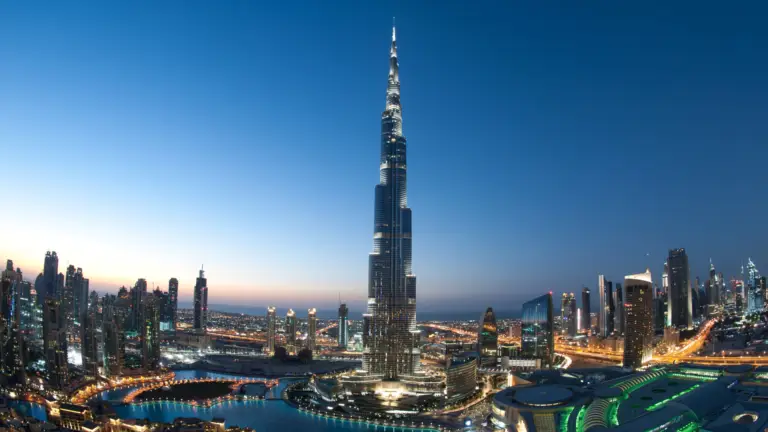The Burj Khalifa, located in Dubai, is a structure recognized worldwide for its impressive height and innovative architectural design. In this blog, we will explore the history, design, and cultural impact of the Burj Khalifa, a landmark that has left an indelible mark on modern architecture.
History and Context:
The history of the Burj Khalifa dates back to the early 21st century when Dubai aimed to establish itself as a global city of renown. In 2004, an ambitious project was launched to build the world’s tallest skyscraper. Construction began in 2004 and was completed in 2010, turning the Burj Khalifa into a symbol of Dubai’s vision and progress.
Architectural Design:
The architectural design of the Burj Khalifa is truly unique and bold. Standing at over 828 meters, the building gracefully reaches towards the sky. Its sleek and spiraling shape, inspired by Islamic minarets and the desert flower, combines smooth curves with precise geometry. The use of modern materials and advanced technology has allowed for the creation of an incredibly resilient and visually striking structure.
Construction Process:
The construction process of the Burj Khalifa was an unprecedented technical feat. During the years of construction, innovative engineering techniques were employed, and numerous challenges were overcome. The use of reinforced concrete, high-strength steel, and specialized foundation systems were crucial in elevating the building to unprecedented heights. Additionally, teamwork and collaboration among international experts in design and construction were essential to the project’s success.
Cultural and Artistic Impact:
The Burj Khalifa has had a profound impact on Dubai’s culture and art. Beyond being a symbol of modernity and the city’s development, it has attracted visitors from around the world. The building houses a mix of residential, commercial, and entertainment spaces, including luxurious hotels, world-class restaurants, and an observation deck offering breathtaking panoramic views. The Burj Khalifa has also served as a backdrop for internationally renowned events and shows, solidifying its status as a significant cultural and tourist hub.
Legacy and Recognitions:
The Burj Khalifa has been widely recognized as an architectural marvel and a remarkable technical achievement. Since its inauguration, it has set multiple world records, including the tallest skyscraper, the fastest elevator, and the highest observation deck. Its design and construction have influenced contemporary architecture, inspiring new projects worldwide. Additionally, the Burj Khalifa has received numerous awards and accolades for its contribution to the construction industry and its impact on the city of Dubai.
The Burj Khalifa is more than just an imposing skyscraper. It is a testament to Dubai’s bold vision and determination to reach new heights. Its innovative architectural design and cultural and artistic impact have left a lasting mark on the city and the architecture industry. The Burj Khalifa continues to be a globally recognized landmark, symbolizing the spirit of surpassing boundaries and architectural excellence.




